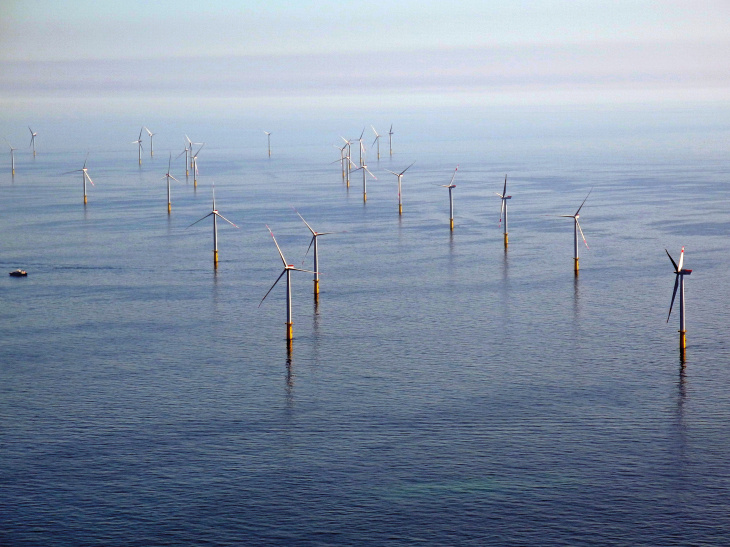Climate change: wind farms must be taken into account
The European Union's goal of becoming climate neutral by 2050 has strongly driven the expansion of renewable sources of energy - and thus also the expansion of large-scale wind farms in the open sea, the so-called offshore wind farms. A new model study by the Helmholtz-Zentrum Hereon now shows that these wind farms have a strong impact on the climate of the ocean surface. To assess the influence of offshore windfarms on regional climate and the ecosystem of the North Sea more reliably, the scientists call for these effects to be taken into account in future models. The results of their study have been published in the journal Nature Scientific Reports.

Offshore wind farm. Photo: Hereon/Sabine Billerbeck
In order to achieve climate neutrality by 2050, almost half of the planned wind turbines are to be built in the North Sea - bundled in large offshore wind farms. In a new study, a research team from the Helmholtz-Zentrum Hereon has now analysed how wind farms in the North Sea can affect the local climate in these areas. This includes air temperature, wind speed as well as cloud formation and precipitation. Their result: the planned large-scale wind farms will permanently change the climate in the wind farm areas.
The team consists of three scientists from the Hereon-Institute of Coastal Systems – Analysis and Modeling: lead-author Dr Naveed Akhtar, Dr Beate Geyer and Prof Corinna Schrum, director of the Institute.
They found that near the sea surface, the wind is decreased by up to 1 m/s, turbulence occurs two percent less and the air is 0.25 °C warmer. This results in the reduction of heat transfer from the ocean to the atmosphere in wind farm areas: The atmosphere within wind farms is less heated by the ocean than outside of them. “These effects, that modify the near surface climate, are the result of the wakes generated by the windfarms which can extent up to 40 kilometres beyond the windfarms”, so Akhtar. In addition, the wind turbines increase the mixing in the vertical column of the atmosphere by carrying moist and cold air aloft. As a result, the atmospheric levels below the rotor area become warmer and drier and the levels above the rotor area colder and moister. The latter changes increases the cloud cover, which leads to an increase in rainfall by about five percent within the wind farm areas. These effects are strongest during the autumn season.
Deviating forecasts
Such changes in sea surface winds and heat fluxes impact the local climate of the North Sea that can influence the physical and biogeochemical processes in the sea, for example induced changes in vertical and horizontal currents near the wind farms. The temperature changes induced by the windfarms are small compared to the expected temperature increase due to climate change. However, the reductions in wind speed are larger compared to the expected trends.
These effects, generated by windfarms, are not yet taken into account in existing climate and ecosystem models. In the light of the accelerating deployment of offshore wind energy farms and the results of their study, the team therefore proposes to incorporate the influence of wind farms. Especially into current climate change impact assessments for the North Sea area as well as other hotspot regions for wind energy production. For only then these assessments can provide plausible regional future climates projections, to provide stakeholders with crucial information on the possible effects of further human intervention and climate change in the North Sea.
Further information
- Original publication Akhtar, N., Geyer, B., Schrum, C. Impacts of accelerating deployment of offshore windfarms on near-surface climate. Sci Rep 12, 18307 (2022). https://doi.org/10.1038/s41598-022-22868-9
- Institute of Coastal Systems – Analysis and Modeling
Contact
Scientist
Phone: +49 (0) 4152 87-2183
Institute of Coastal Systems – Analysis and Modeling
Helmholtz-Zentrum Hereon
Press Officer
Phone: +49 (0) 4152 87-1784
Communication and Media
Helmholtz-Zentrum Hereon
